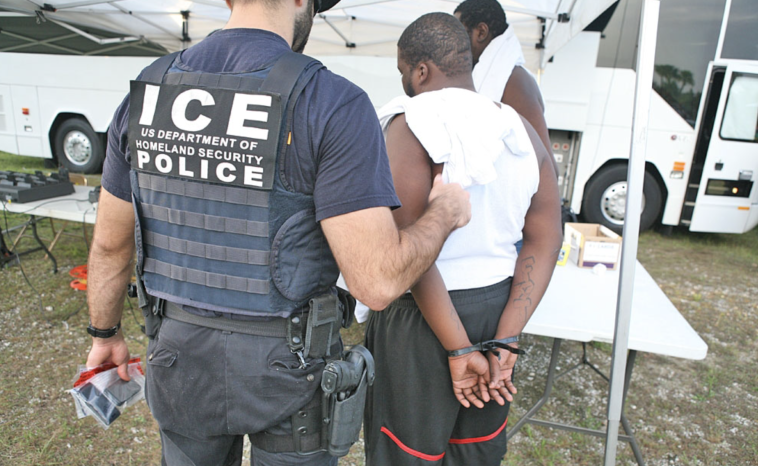Advertisement
Advertisement
A recent ruling from a federal court in Illinois has been viewed by conservatives as another blow to U.S. immigration enforcement, as it imposes new restrictions on Immigration and Customs Enforcement (ICE) operations inside courthouses. The decision, issued by U.S. District Judge Jeffrey Cummings, an Obama-era appointee, bars ICE agents from detaining illegal aliens in or near courthouses without first obtaining a judicial warrant. The judge also warned that agents could face contempt sanctions if the order is disregarded.
Advertisement
The case, Margarito Castañon Nava v. Department of Homeland Security, dates back to 2018 and originated under the Obama administration. A settlement in 2022 had already limited ICE’s ability to conduct warrantless “collateral” arrests across the Chicago Field Office region, covering several Midwestern states. However, Judge Cummings claimed that multiple violations had occurred, prompting an extension of court oversight through 2026.
Advertisement
Advertisement
Homeland Security officials signaled that the agency would comply with the order but cautioned that such restrictions could make it significantly harder to enforce immigration law, remove deportable individuals, and protect federal facilities during potential unrest.
Advertisement
Under the court’s interpretation of 8 U.S.C. §1357(a)(2), it was decided that warrantless arrests by ICE require not only probable cause that a person is removable but also proof that the suspect is “likely to escape before a warrant can be obtained.” Officers have now been ordered to document that assessment on arrest forms and to re-acknowledge the policy in writing.
Advertisement
Advertisement
The ruling also disallowed the agency’s use of administrative arrest warrants as an alternative to judicial approval. ICE had argued that such warrants were part of standard procedure in collateral arrests, but the court rejected that position, stating that administrative forms could not bypass statutory requirements. Further, the consent decree in the case was extended after the court determined that ICE had “ceased compliance” earlier in 2025. Federal immigration officials were ordered to provide monthly arrest data and undergo additional training under judicial supervision.
Judge Cummings additionally sided with plaintiffs in 22 out of 26 reviewed arrests, claiming that ICE agents failed to show “likelihood of escape” in several operations. Among the incidents cited was a Missouri restaurant sweep in which a group of workers—nicknamed “the Liberty 12”—was detained under guard. The judge ruled that those involved were effectively under arrest without sufficient legal justification.
Advertisement
Advertisement
As part of the remedies, ICE has been directed to reimburse bonds, lift release conditions, and cover the legal costs of plaintiffs. Officers involved are to undergo mandatory remedial training, with proof of completion to be submitted to the court. Despite the ongoing partial government shutdown, ICE operations have continued nationwide, with the Department of Homeland Security stating that it will adhere to all lawful orders. Still, DHS defended the agency’s right to enforce immigration law wherever necessary, suggesting that the court’s ruling risks creating “de facto sanctuaries” where lawbreakers may evade arrest.
According to a DHS statement, stating that there are no sanctuaries from the law, emphasizing that the Constitution grants federal officers authority to apprehend illegal aliens wherever they are found. Conservatives have expressed frustration that judicial intervention continues to undermine ICE’s ability to carry out its mission. The Biden administration’s muted defense of ICE operations, some argue, reflects the broader left’s reluctance to enforce immigration laws passed by Congress.
The ruling adds to growing concern that unelected judges are increasingly shaping federal enforcement priorities, restricting immigration agents at a time when border apprehensions and interior arrests remain at record levels.



